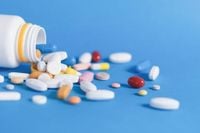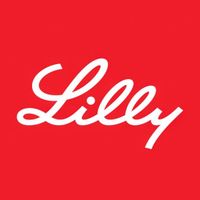On April 17, 2025, the stock market saw significant movements, with Eli Lilly (NYSE: LLY) emerging as a standout performer. Following the announcement of successful results from its Phase 3 clinical trial for orforglipron, a novel oral medication aimed at treating type 2 diabetes, Eli Lilly's shares surged by 12%. This trial, known as ACHIEVE-1, demonstrated notable efficacy in reducing A1C levels, a key indicator of blood sugar control, by 1.3% to 1.6% from a baseline of 8.0%. Additionally, at the highest dose of 36 mg, participants lost an average of 16.0 lbs (7.9%), with over 65% achieving A1C levels of 6.5% or lower.
The positive trial results position Eli Lilly favorably against competitors such as Novo Nordisk, especially considering that orforglipron is the first small molecule GLP-1 receptor agonist to successfully complete Phase 3 trials. The medication's convenience as a once-daily pill, which can be taken without restrictions on food and water, presents a significant advantage over injectable alternatives like Ozempic.
In stark contrast, UnitedHealth Group (UNH) faced a considerable downturn on the same day, with shares plummeting 20% after the company released disappointing first-quarter earnings. UnitedHealth cited heightened care needs in Medicare and unforeseen changes in its Optum Health care delivery business as contributing factors. The company adjusted its full-year earnings forecast downwards, now projecting adjusted earnings of $26 to $26.50 per share, a drop from the previous estimate of $29.50 to $30. This disappointing news not only affected UnitedHealth's stock but also had a ripple effect on the broader market, with Dow futures decreasing by 1.47% due to the decline.
Despite UnitedHealth's struggles, futures for the S&P 500 and Nasdaq saw gains of 0.52% and 0.79%, respectively, buoyed by a rebound in some technology stocks. Analysts noted that the mixed market performance reflected ongoing concerns regarding inflation and the Federal Reserve's monetary policy. Chair Jerome Powell's recent comments indicated that the Fed is unlikely to implement rate cuts in the near future, adding to the cautious sentiment among investors.
Meanwhile, Hertz (HTZ) experienced a significant boost, with shares jumping after the company reported its largest gain ever on April 16, 2025. This surge followed the disclosure that Pershing Square Capital Management, led by Bill Ackman, had acquired nearly 20% of Hertz’s shares, amounting to 12.7 million shares valued at approximately $46.5 million. This investment has sparked renewed interest in the beleaguered car rental company, which has been working to recover from the pandemic's impact.
In addition to Eli Lilly's promising developments, other companies also reported earnings on April 17. Charles Schwab (SCHW), Blackstone (BX), and Taiwan Semiconductor Manufacturing Company (TSM) all posted gains following their earnings reports, signaling a positive outlook in certain sectors. However, Global Payments (GPN) saw an 8% decline due to announced divestitures and acquisition plans.
As the stock market navigates these varied performances, investors are keeping a close eye on Eli Lilly's trajectory. With its strong growth metrics, including a 32% revenue increase over the past year, Eli Lilly has positioned itself as a leader in the rapidly expanding diabetes and obesity treatment market. Analysts are optimistic about the company’s future, with an average price target of $1008 suggesting a potential upside of over 20% from current levels.
The overall economic landscape remains complex, with rising oil prices contributing to inflationary pressures. Bitcoin has stabilized around $84,700, while gold continues to attract investors seeking safety amid economic uncertainties. As markets react to these developments, the focus will remain on how companies like Eli Lilly adapt to the evolving landscape of healthcare and pharmaceuticals.







